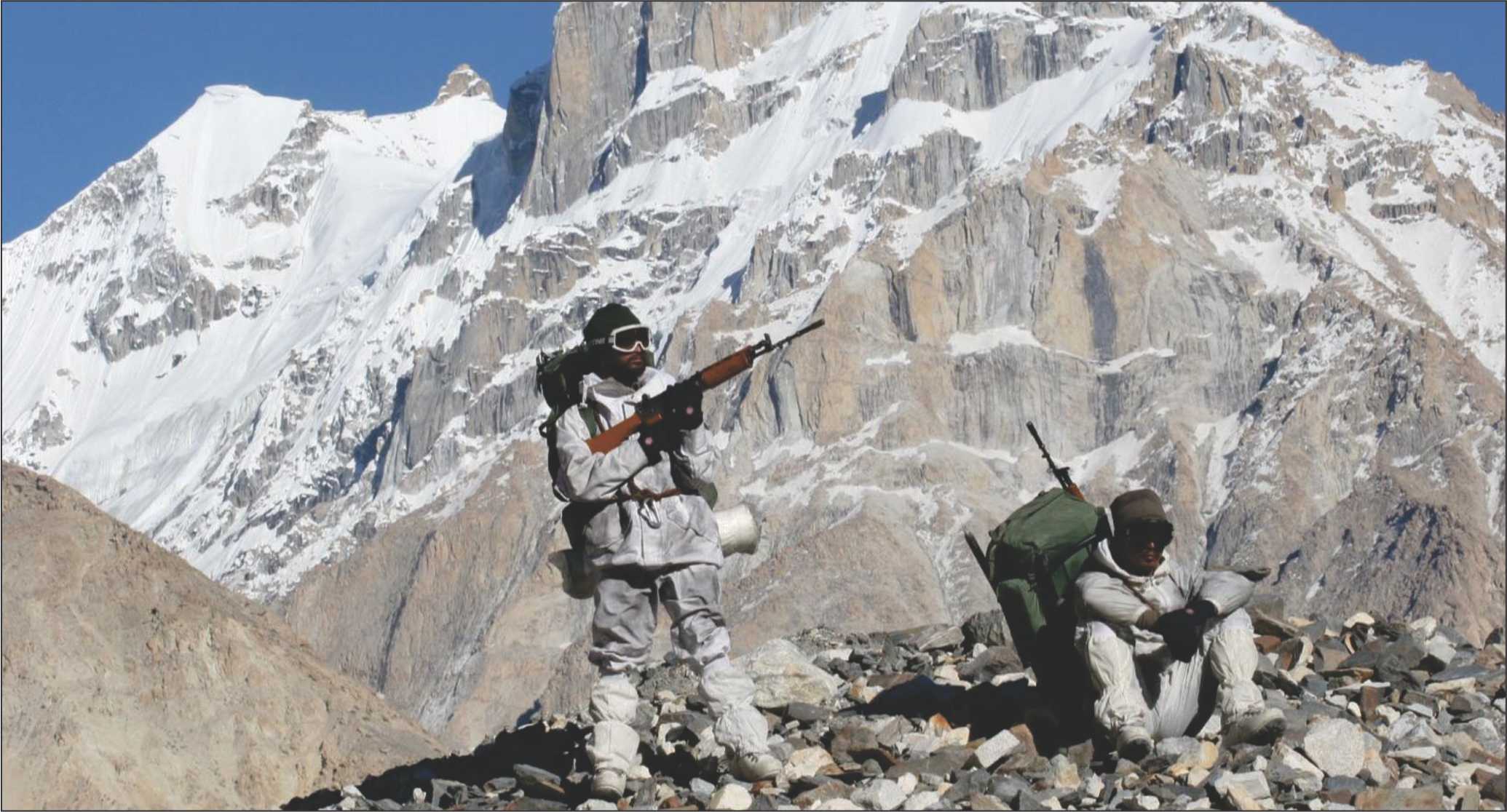Pakistan’s game plan for Siachen
Pakistan High Commissioner Abdul Basit’s recent comments in Mumbai on the possibility of a resolution of the Siachen issue once talks resume makes one wonder why he is so optimistic about any outcome over the issue given Pakistan’s hard line about accepting the Actual Ground Position Line.
The point at issue is why should the Indian Army withdraw from its own territory which is an integral part of Jammu and Kashmir even as Pakistan and China are in occupation of large segments and both are conniving to create road, rail and pipeline connectivity over what they say is disputed territory?
Worse, why should Indian troops withdraw from any part of Jammu and Kashmir even while there are between 4000 and 9000 Chinese People’s Liberation Army troops disguised as engineers and technicians in Pakistan Occupied Kashmir.
Controlling territories
A solution based on a recognition of where exactly the troops of each side are Positioned makes no sense because one or the other side can return as clandestinely as was attempted in 1984. Given the manner ceasefire violations are taking place along the Line of Control how can India trust Pakistan not to violate a stretch of territory that is unguarded? More particularly when it has so zealously coveted that strip of territory over the past three decades and pushed its troops to try and dislodge Indian soldiers from the crestline of the Soltoro range overlooking the Siachen Glacier.
The jihadis within the Pakistani political milieu are waiting with open arms for the arrival of Narendra Modi. The moment he begins where Atal Behari Vajpayee left off after his ‘bus diplomacy’ was punctured by General Pervez Musharraf.
He would be walking into the ‘talk trap’ of the composite dialogue and the focus would be removed from Pakistani-sponsored terrorism. The chapters of Indo-Pak relations during the Vajpayee-led NDA governance includes Kargil even when sane voices were warning that Siachen should be removed from the negotiating table because it leaves room for more attempts by the Pakistani military to nibble Indian territory. And sure enough Kargil happened.
It was done under the camouflage of “non state actors” by the Pakistan Army’s Northern Light Infantry initiated by the Chief of Army Staff himself. Musharraf says Nawaz Sharif was briefed about the operation. Sharif says he was “not in the loop”. India under Modi is heading back to this façade of deniability and injured innocence.
The next government in New Delhi should shift the onus on both Pakistan and China by a demand that the territories under dispute that are under the control of these countries should become “crossroads of connectivity” by which, just as the two are utilizing the disputed territory to create road, rail and pipeline links between themselves, India should be allowed to use the Chinese-built Aksai Chin road in north Jammu and Kashmir for passage to Afghanistan’s Wakhan corridor. The link to Afghanistan could be a joint venture between China and India. This proposal should be attractive to China because it will give it a direct link to Afghanistan. The foundational diplomatese for this could be the pro forma ‘without prejudice to the claims of all concerned’.
If Modi does not take this advice he will go down in history as the person who facilitated the creation of a Pak-China steel collar around India’s neck. The “Accidental Prime Minister” will come out as the one who created an alternative corridor through Iran to ensure that India retains its relevance to the world beyond Pakistan.
The next government may believe that the clearance for the Most Favoured Nation treaty under a different camouflage is a goodwill gesture to him. It should look up what the Pakistan Army, through the use of its Taliban henchmen, did to the NATO convoys that, by a legally legitimate document, gave the right to free, untrammeled passage through Pakistani territory for the NATO convoys.
The same thing is going to happen to the Indian trucks that enter Pakistan through the Attari/Wagah trade route or attempt to head for Afghanistan through the tribal areas of Khyber Pakhtunkhwa (former North West Frontier Province). It could be argued that the same thing could happen to Indian convoys on the north Afghanistan route; the critics should rest assured that the Chinese would not want this manifestation of Islamic jihadi terrorism so close to home in Xianjiang.
Alternate route
Simultaneously, the new government should concentrate on bringing to fruition the new trade route to Afghanistan through a modernized port at Chahbahar on the Iranian coastline. Iran has already created a road link to connect the port city to Zaranj where the India-built 200 km road from Delaram in Afghanistan arrives. At Delaram the road links up with the Afghan ring road which in a clockwise direction leads to Afghanistan’s Central Asian neighbors Turkmenistan, Uzbekistan and Tajikistan on the other side of the Amu Darya (Oxus River) which is so intimately linked to ancient Indian history.
The next government should give priority to make the private sector show more interest in the development of the Chahbahar Port unlike the indifference they displayed when Sri Lanka floated the tenders for the Hambantota port which China scooped up in such a grand strategic coup. If the Indian private sector had shown some awareness of India’s strategic interests instead of just the profit motive, China would not be standing at our doorstep today.
If it works out India would have two options for trade relations with Afghanistan and the Commonwealth of Independent States. The one through Iran has the added advantage of restoring the ancient links with Iraq and opening up a route to Turkey and beyond to Europe.
As far as Siachen is concerned, Pakistani diplomacy has made it into an exercise to force India to withdraw its troops from its own territory. It is time India raised objections to the grand plans between China and Pakistan to annexe portions of Jammu and Kashmir and create infrastructure inclusive of roads, railway and oil and gas pipelines. It is because successive Indian governments have failed to assert their sovereignty over all parts of Jammu and Kashmir and only paid lip service to the concept that the whole of the state is an integral part of India.
The concept of delineation of the Actual Ground Position Line has always been fraught with the danger of having to move Indian troops out of positions of advantage along the ridgeline of the Soltoro Range which is a natural impediment to access from portions held by Pakistan. To vacate it would invite future trouble.




